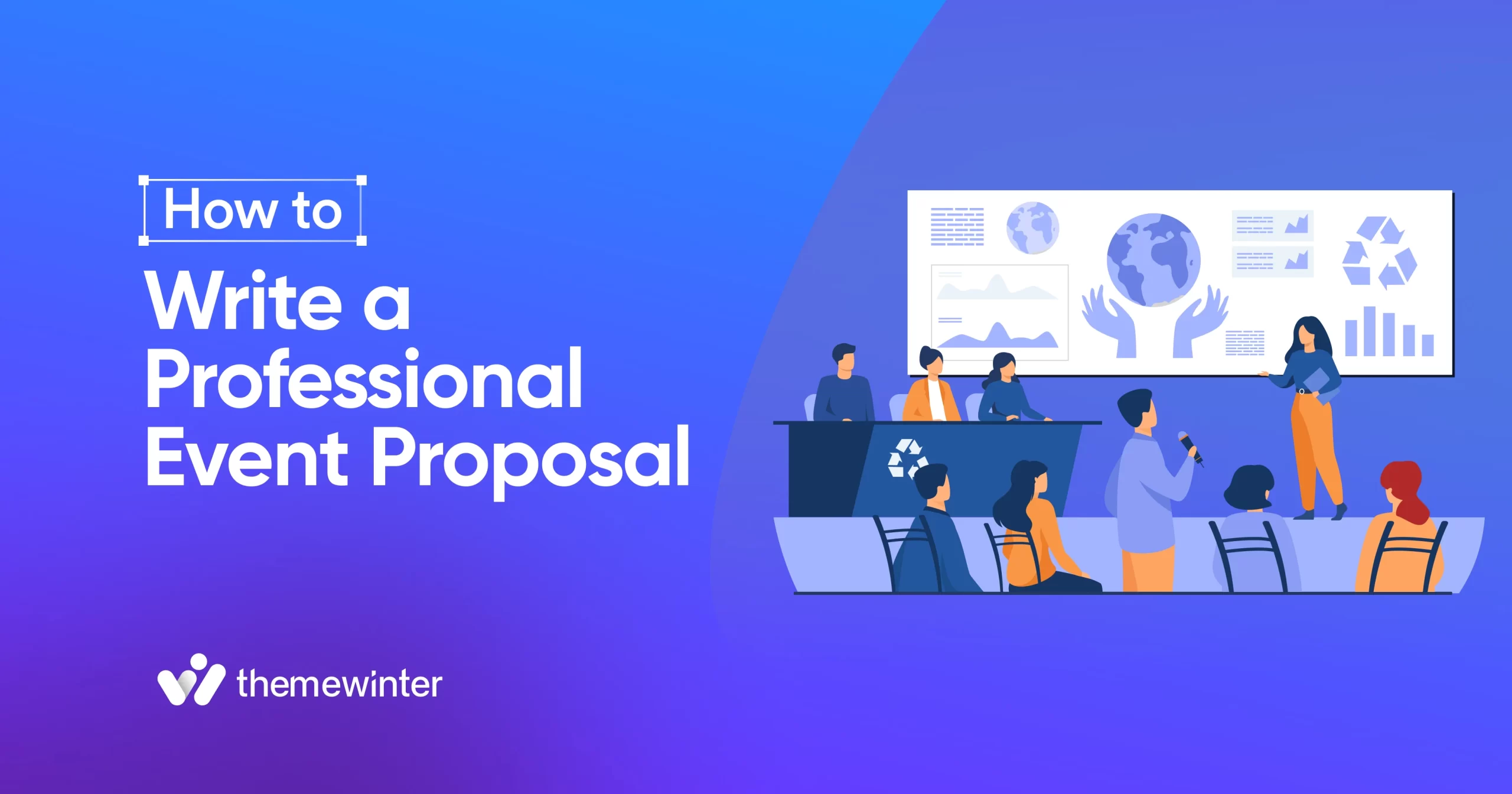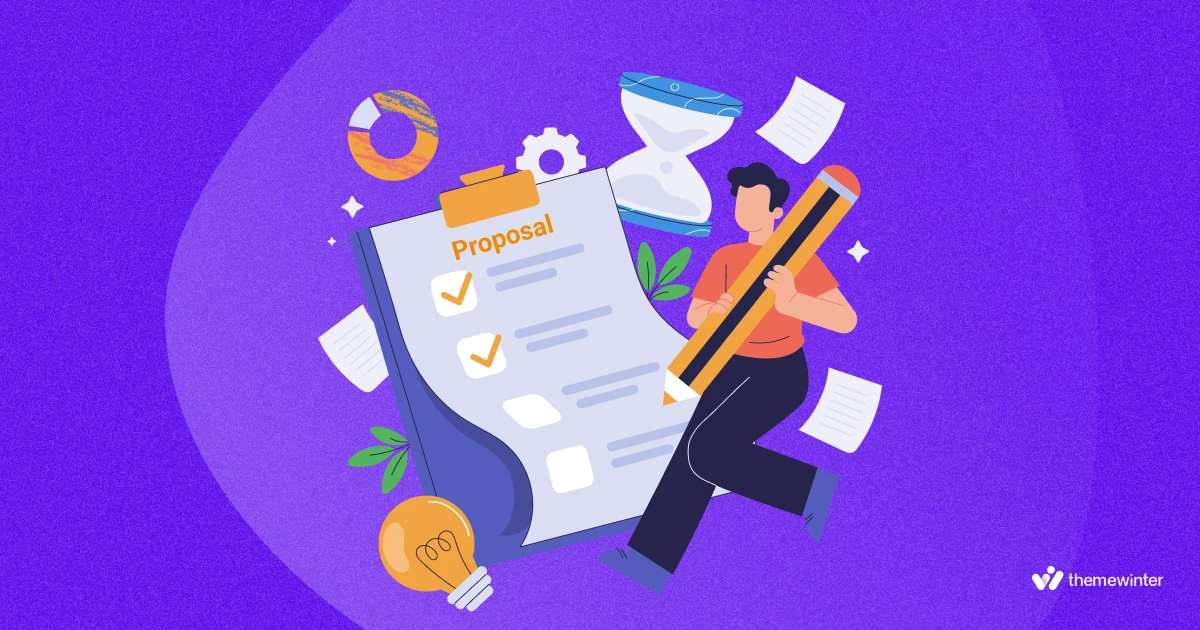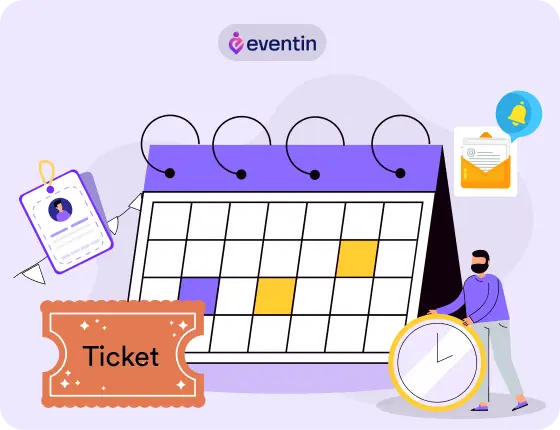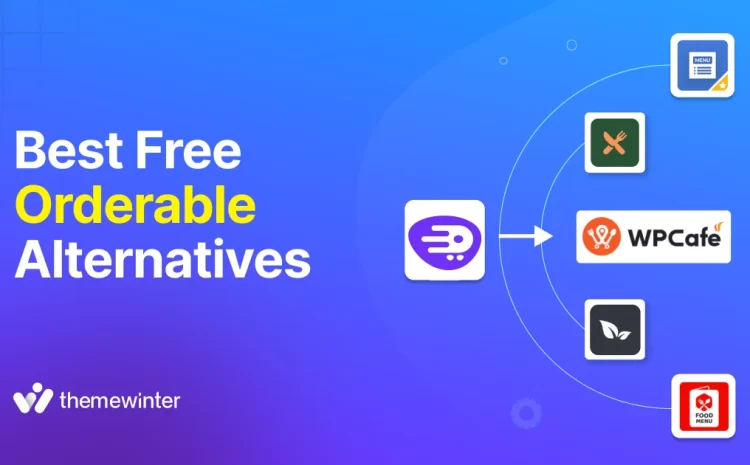How to Write a Professional Event Proposal

Table of Contents
If you want to plan a successful event, your first step is to create a strong event proposal.
A well-crafted event proposal is the first step to a successful event. It helps planners, agencies, freelancers, and corporate teams to get approval, funding, and support.
Whether you are planning a conference, a gala, or a product launch, a professional proposal shows that your event idea is clear and possible. Without a clear structure—such as goals, budget, and timeline — even proposal can be rejected.
Did you know? 70% of event planners say that a well-structured proposal significantly increases their chances of securing funding or approval.
This guide , you will learn how to write a clear and professional event proposal that impresses clients, sponsors, or partners. We will help you create an event proposal that captures your clients’ attention.
Understand the purpose of your event proposal
Event proposal is more than just a plan. It’s an opportunity to communicate your event idea in a clear and professional way. It helps your client, sponsor, or decision-maker understand what the event is, why it matters, and how it will be executed.
Your goal is to gain approval, funding, or support for the event. Make sure you explain your event clearly in the proposal and prove that it’s worthy of investment and realistic.
You could use your proposal to(example):
- Pitch a new event idea to a client
- Get a sponsor to fund the event
- Present a plan to your manager or company
- Win a project as a freelancer or agency
Having a clear understanding of the purpose will help you focus your proposal and include only the details that are relevant to the project.

Identify your target audience

Before you start writing, it’s important to know for whom you are creating an event proposal. Identifying your target audience helps you shape your proposal, make better decisions, and create an event that meets the right needs.
How to Identify your audience:
- Look at the event’s goal.
– Is it to educate, promote, sell, or entertain? The goal usually points to the right audience. - Ask yourself, who will benefit from the event?
– Think about who needs the information, product, or experience you are offering. - Consider the client or sponsor’s goals.
– Who are they trying to reach or engage through this event?
Common audience categories:
- Business Professionals – For conferences, networking events, or workshops.
- Customers or Users – For product launches, demos, or appreciation events.
- General Public – For charity events, festivals, or community gatherings.
- Employees or Teams – For internal events like training, team-building, or corporate meetings.
- VIPs or Stakeholders – For investor events, high-end galas, or exclusive previews.
Once you know your audience, design your proposal to meet their needs and expectations. This helps show that your event is relevant, well-planned, and worth supporting.
📌 Related Reading: How to Create Seamless Event Registration with Eventin- Read more
How to write an event proposal

The event proposal is an important document that describes your event idea, plan, and budget for potential clients, sponsors, or decision-makers. A professional event proposal should be clear, well-organized, and focused on your goals for the event. A well-written proposal helps you get approvals, secure funding, and gain support to make your event successful.
Here’s a step-by-step guide to writing an event proposal:
Step 1. Cover page
The cover page is the first thing your reader will see, so keep it clean and professional. Include:
- The title of the event
- The name of your organization or agency
- Your logo (if applicable)
- Proposal submission date
- Contact information
In this way, you present a professional and organized approach.
Step 2. Executive summary
This is a brief snapshot of the entire proposal. It should summarize:
- The purpose of the event
- Planning reasons for the event
- The target audience
- What outcomes are expected
Keep this section short—no more than a few paragraphs. It should also be clear enough to help busy readers to quickly understand the value of your event.
Step 3. Event overview
Give a more detailed description of the event here.
Include:
- The event type (e.g., conference, charity gala, launch party)
- The theme or concept
- The overall purpose (e.g., to educate, celebrate, promote, or raise funds)
This helps the reader understand your vision and the experience you plan to create.
Step 4. Target audience details
To make your event successful, you must understand your audience:
- Describe who is going to attend the event (age group, profession, interests)
- Why this audience is important to the client or sponsor
- Estimated number of attendees
- How the event will meet their needs or expectations
The more clearly you define your audience, the easier it is to show the event’s value and relevance.
Step 5. Event details (Date, Location, Agenda)
This section should outline all the basic logistical information:
- Proposed date and time
- Event duration
- Location or virtual platform (with venue address or online link)
- A sample agenda or schedule (e.g., welcome speech, keynote sessions, breaks, entertainment, etc.)
This helps the reader visualize how the event will develop.
Step 6. Services offered
If you’re offering full-service planning or working as an agency, list the services you will provide. This could include:
- Event coordination and planning
- Venue booking
- Catering and menu planning
- AV and lighting setup
- Guest registration and ticketing
- On-site staff and management
This shows what you’re responsible for and helps the client understand the scope of your work.
Step 7. Marketing and promotion plan
Explain how you plan to promote the event and attract attendees. Your strategy could include:
- Social media campaigns
- Email marketing
- Paid advertising (Google or social media ads)
- Influencer or partner marketing
- Flyers, posters, or print ads (for local events)
- Press releases and media coverage
When you develop a strong marketing plan, you become more confident that you can deliver results.
Step 8. Risk management and contingency plan
Every event comes with risks—weather issues, low attendance, technical problems. This section should show that you’re prepared.
Mention:
- Common risks related to your event type
- How you will handle them (e.g., backup venue, alternative dates, extra staff)
- Health and safety measures, if needed
By addressing potential challenges, you will build trust.
Step 9. Logistics and execution plan
This section covers the behind-the-scenes operations. Include:
- Setup and breakdown plans
- Delivery schedules for equipment or catering
- Staff roles and responsibilities
- Coordination with vendors or partners
Logistics show how your team will execute the event smoothly and professionally.
Step 10. Budget breakdown
Break down your estimated costs in a clear table format. Categories might include:
- Venue rental
- Food and beverages
- Equipment (Audio, lighting, furniture)
- Decorations
- Marketing and promotions
- Staff and security
- Miscellaneous or contingency fund
Being transparent about the budget shows you are realistic and well-prepared.
Step 11. Team credentials and experience
Introduce the people behind the event. Highlight:
- Your team’s background and experience
- Successful past events
- Client testimonials or case studies
It gives clients confidence that they are in the right place.
Step 12. Event policies and compliance
Include any important policies related to the event such as:
- Health and safety regulations
- Insurance requirements
- Permits or licenses
- Accessibility accommodations
This shows that you follow legal and professional standards.
Step 13. Timeline and key deliverables
Show a timeline of the key milestones before the event.
- Planning stages
- Promotion schedule
- Deadlines for bookings and payments
- Rehearsal or setup dates
- Post-event wrap-up
This gives the client a clear view of how the project will progress over time.
Step 14. Call to action / next steps
End your proposal with a strong and clear call to action. Depending on your goal, this could be:
- Requesting approval to proceed
- Scheduling a meeting
- Asking for feedback
- Providing payment or contract details
Make it easy for the reader to know what to do next.
Step 15. Attachments (Optional)
Use this section to include extra documents, visuals, or information that support your proposal. For example:
- Event photos from previous projects
- Floor plans
- Sample tickets or invites
- Additional budget sheets
- References or case studies

5 Professional event proposal templates

Save time and impress clients with these ready-to-use event proposal templates.Below, we’ve created some popular event proposal templates. Whether you’re planning a sports event, wedding, fundraising event, music concert, or art exhibition, you can follow these formats to present your plan professionally:
1. Event proposal template for sports
Cover page
- Event Title: [Insert Event Name]
- Prepared For: [Client/Stakeholder Name]
- Prepared By: [Your Name or Organization]
- Date: [Insert Date]
Executive summary
Provide a brief overview of the event, highlighting its purpose, vision, and primary objectives. Clearly state why this proposal is being submitted and how the event will benefit stakeholders.
Event overview
- Event Name: [Insert Event Name]
- Event Type: [Tournament, Championship, Friendly Match, Charity Event, etc.]
- Sport Type: [e.g., Soccer, Basketball, Cricket, Marathon]
- Event Theme: [Insert Theme if applicable]
- Purpose: [Clearly state the main goal of the event]
- Objectives
- -Objective 1
- -Objective 2
- -Objective 3
Target audience
- Demographics: [Age, gender, profession, interest groups, geographical location]
- Expected Attendance: [Approximate number]
- Special Guests or Participants: [Notable teams, athletes, or celebrities if applicable]
Event details
- Date & Time: [Insert Proposed Date and Time]
- Venue: [Venue Name, Address, Capacity]
- Event Format: [Structure, matches, knockout rounds, leagues, etc.]
- Rules and Regulations: [Briefly outline applicable rules and standards]
- Tentative Agenda:
- -Registration
- -Opening Ceremony
- -Matches/Competitions
- -Breaks
- -Closing and Award Ceremony
Services offered
- Venue management
- Catering and refreshments
- Audio-visual support
- Event staffing
- Entertainment and engagement activities
- Guest and participant coordination
Marketing and promotion plan
- Marketing Channels: [Social media, local media, online ads, email marketing]
- Timeline: [When promotions start]
- Assets Needed: [Flyers, landing pages, promotional videos]
Sponsorship opportunities
Clearly define available sponsorship packages, benefits, and tiers. Identify potential sponsors and their alignment with the event’s theme and objectives.
Risk management and contingency plan
- Potential Risks: [Weather, injury, technical failures, low turnout]
- Contingency Plans: [Backup venue, medical services, virtual fallback, extra promotion]
Logistics and execution plan
- Vendor Management: [List vendors and contracts]
- Staff Assignments: [Roles and responsibilities]
- Equipment and Setup: [Stage, lighting, Wi-Fi, sports equipment, etc.]
Budget proposal
- Venue Rental: [Insert Cost]
- Catering: [Insert Cost]
- Marketing: [Insert Cost]
- Staffing: [Insert Cost]
- Miscellaneous: [Insert Cost]
Total Estimated Cost: [Insert Total]
Team credentials and past experience
- Team Overview: [Brief introduction of the event team]
- Past Events Highlighted: [Short case studies or links to successful events]
Event policies and compliance
- Health & Safety Guidelines
- Data Privacy Compliance
- Refund and Cancellation Policies
Timeline and key deliverables
- Marketing Launch: [Insert Date]
- Early Bird Registration: [Insert Date]
- Final Venue Walkthrough: [Insert Date]
- Event Day: [Insert Date]
Call to action / next steps
Clearly describe the next steps required from stakeholders (approval, meeting scheduling, contract signing). Example: We look forward to your approval to begin preparations for [Event Name]. Please confirm by [Insert Confirmation Date].
Attachments (Optional)
- Floor Plans
- Marketing Samples
- Detailed Event Schedule
- Testimonials from Past Events
📌 Goodreads: Maximize Your Event Success with AI-Powered Automation- Read more
2. Event proposal template for wedding
Cover page
- Event Title: [Bride & Groom’s Name Wedding Celebration]
- Prepared For: [Client’s Name]
- Prepared By: [Your Name or Organization]
- Date: [Insert Date]
Executive summary
Provide a concise overview of the wedding celebration, emphasizing its style, theme, key features, and objectives. Highlight the uniqueness of your approach and the memorable experience you’re proposing.
Wedding overview
- Event Name: [Insert Wedding Name]
- Event Type: [Traditional, Modern, Destination Wedding, etc.]
- Theme/Style: [Romantic, Rustic, Vintage, Elegant, Beachside, etc.]
- Purpose: [Celebration of marriage and creating lasting memories]
- Key Objectives:-
- Objective 1 (e.g., Seamless guest experience)
- -Objective 2 (e.g., Elegant aesthetics)
- -Objective 3 (e.g., Personalized touches)
Client vision & preferences
- Bride & Groom Preferences: [Style, color scheme, cultural traditions]
- Special Requests: [Specific rituals, guest experiences, customized elements]
Event details
- Proposed Date & Time: [Insert Date and Time]
- Venue: [Venue Name, Location, Capacity]
- Ceremony & Reception Details:
- -Ceremony outline
- -Cocktail hour specifics
- -Reception dinner and party timeline
Services offered
- Venue booking and management
- Catering and beverages
- Decoration and floral arrangements
- Photography and videography
- Entertainment (DJ/Band, performances)
- Bridal party coordination
- Guest transportation and accommodation
Design & Decor
- Decoration Concept: [Color schemes, floral details, table settings, lighting, etc.]
- Mood Boards or Visual References: [Provide visual inspiration if available]
Logistics and execution plan
- Vendor Management (catering, florists, entertainment)
- Event Timeline and run sheet
- Equipment and Setup Requirements (stage, sound, lighting)
Marketing and guest management
- Invitations and RSVPs handling
- Event website (optional)
- Guest communications (email, SMS)
Risk management and contingency plan
- Potential Risks: [Weather issues, vendor cancellations, delays]
- Contingency Plans: [Backup venue, alternate vendors, emergency support]
Budget proposal
- Venue Rental: [Insert Cost]
- Catering: [Insert Cost]
- Decorations & Floral: [Insert Cost]
- Entertainment: [Insert Cost]
- Photography/Videography: [Insert Cost]
- Staff & Coordination: [Insert Cost]
- Miscellaneous: [Insert Cost]
Total estimated cost: [Insert Total]
Team credentials and past experience
- Brief overview of the wedding planning team
- Highlight successful weddings previously organized
Event policies and compliance
- Health & Safety Standards
- Privacy and confidentiality assurance
- Cancellation and refund policies
Timeline and key deliverables
- Initial Planning Meeting: [Insert Date]
- Venue Confirmation: [Insert Date]
- Vendor Bookings Finalized: [Insert Date]
- Final Walkthrough: [Insert Date]
- Wedding Day: [Insert Date]
Call to action / next steps
Clearly describe next steps required (approval, signing of contracts, scheduling planning sessions). Example: We look forward to your approval to begin planning your special day. Please confirm by [Insert Confirmation Date].
Attachments (Optional)
- Venue Floor Plans
- Sample Invitations
- Decoration Visuals
- Vendor Recommendations
📌 Goodreads: How to Design Custom Event Landing, Event Certificate and Event Tickets for Your Event Management Website- Read more
3. Fundraising event proposal template
Cover page
- Event Title: [Insert Event Name]
- Prepared For: [Client/Organization Name]
- Prepared By: [Your Name or Organization]
- Date: [Insert Date]
Executive summary
Provide a brief yet compelling overview of the fundraising event, outlining its purpose, primary objectives, and anticipated impact. Highlight how this event aligns with the organization’s mission and fundraising goals.
Event overview
- Event Name: [Insert Name]
- Event Type: [Gala Dinner, Charity Auction, Run/Walk Event, Concert, etc.]
- Purpose: [Clearly define the cause or specific purpose]
- Objectives:
- -Objective 1 (e.g., Raise awareness)
- -Objective 2 (e.g., Financial target)
- -Objective 3 (e.g., Community engagement)
Target audience
- Demographics: [Age, profession, location, interests]
- Expected Attendance: [Number of attendees anticipated]
- Special Guests/Participants: [Celebrities, key community figures, influencers]
Event details
- Date & Time: [Proposed Date and Time]
- Venue: [Venue Name, Address, Capacity]
- Event Program:
- -Registration
- -Welcome Speech
- -Main Fundraising Activity
- -Entertainment/Performances
- -Closing and Thank You
Fundraising strategy
- Primary Fundraising Methods: [Ticket sales, auctions, sponsorship, donations, raffles]
- Financial Goal: [Target amount to be raised]
Marketing and promotion plan
- Channels: [Social media, email marketing, local media, partnerships]
- Promotion Timeline: [When promotions begin and key milestones]
- Assets Required: [Event flyers, promotional videos, landing pages, social media posts]
Sponsorship and partnership opportunities
- Sponsorship Tiers: [Define sponsorship levels and benefits]
- Potential Sponsors: [Identify potential sponsors relevant to the cause]
Logistics and execution plan
- Vendor Management: [List vendors and contacts]
- Staff Assignments: [Who is responsible for what]
- Equipment and Setup: [Stage, AV equipment, tables, Decorations]
Risk management and contingency plan
- Potential Risks: [Low turnout, weather issues, technical problems]
- Contingency Plans: [Backup venues, additional marketing strategies, technical support]
Budget proposal
- Venue Costs: [Insert Cost]
- Catering: [Insert Cost]
- Entertainment: [Insert Cost]
- Marketing: [Insert Cost]
- Staffing: [Insert Cost]
- Miscellaneous: [Insert Cost]
- Total Estimated Cost: [Insert Total]
Team credentials and past experience
- Overview of the event planning team
- Previous successful fundraising events highlighted
Event policies and compliance
- Health & Safety Guidelines
- Data Privacy Compliance
- Financial Transparency
Timeline and key deliverables
- Marketing Campaign Launch: [Insert Date]
- Sponsor Confirmation Deadline: [Insert Date]
- Final Preparations and Walkthrough: [Insert Date]
- Event Day: [Insert Date]
Call to action / next steps
Clearly outline what the reader needs to do next (e.g., approve proposal, schedule a meeting, provide initial funding). Example: We look forward to your confirmation to initiate preparations. Please confirm your approval by [Insert Date].
Attachments(Optional)
- Detailed Budget Breakdown
- Sample Promotional Materials
- Past Event Testimonials
- Sponsorship Agreement Templates
4. Music events proposal template
Cover page
- Event Title: [Insert Event Name]
- Prepared For: [Client/Stakeholder Name]
- Prepared By: [Your Name or Organization]
- Date: [Insert Date]
Executive summary
Present a brief, engaging overview of the music event, highlighting its unique features, musical genres, artists involved, and anticipated outcomes. Emphasize the value this event provides to the attendees and stakeholders.
Event overview
- Event Name: [Insert Event Name]
- Event Type: [Concert, Festival, Showcase, etc.]
- Musical Genres: [Pop, Rock, Jazz, Classical, Electronic, etc.]
- Purpose: [Entertainment, cultural promotion, talent showcasing, etc.]
- Objectives:
- -Objective 1 (e.g., Audience enjoyment)
- -Objective 2 (e.g., Promoting local talents)
- -Objective 3 (e.g., Community engagement)
Target audience
- Demographics: [Age, musical interests, geographic location, lifestyle]
- Expected Attendance: [Estimated attendance number]
- Featured Artists/Performers: [List headliners, supporting acts, DJs]
Event details
- Date & Time: [Proposed Date and Time]
- Venue: [Venue Name, Address, Capacity]
- Event Schedule:
- -Doors Open
- -Performances (list artists and set times)
- -Intermissions
- -Closing Ceremony/Encore
Services offered
- Venue booking and management
- Stage, sound, and lighting setup
- Artist bookings and coordination
- Ticketing and admissions management
- Security and crowd control
- Vendor and concessions management
Marketing and promotion plan
- Channels: [Social media, local radio, digital ads, influencer partnerships]
- Promotion Timeline: [Campaign start dates, key promotional milestones]
- Promotional Assets: [Event posters, videos, flyers, online content]
Sponsorship opportunities
- Sponsorship Packages: [Clearly outline levels, benefits, and opportunities for branding]
- Potential Sponsors: [Suggest suitable sponsors aligned with the event]
Risk management and contingency plan
- Potential Risks: [Weather conditions, artist cancellations, technical difficulties]
- Contingency Plans: [Backup artists, indoor venues, technical support]
Logistics and execution plan
- Vendor Coordination: [Audio-visual providers, food & beverage, merchandise]
- Staffing Roles: [Event management, artist liaison, security teams]
- Equipment Needs: [Stage setup, lighting rigs, sound equipment]
Budget proposal
- Venue Costs: [Insert Cost]
- Artists and Performers: [Insert Cost]
- Technical Setup: [Insert Cost]
- Marketing: [Insert Cost]
- Staffing and Security: [Insert Cost]
- Miscellaneous: [Insert Cost]
- Total Estimated Cost: [Insert Total]
Team credentials and past experience
- Overview of the organizing team
- Examples of past music events successfully executed
Event policies and compliance
- Health & Safety Measures
- Licensing and permits
- Noise control and community standards compliance
Timeline and key deliverables
- Artist Confirmation Deadline: [Insert Date]
- Marketing Launch: [Insert Date]
- Technical Setup Completion: [Insert Date]
- Event Day: [Insert Date]
Call to action / next steps
Clearly state the next steps required from the client or stakeholders (approval, contract signing, initial deposit). Example: We look forward to your approval to kick off the planning process. Please confirm your decision by [Insert Confirmation Date].
Appendices (Optional)
- Venue Floor Plans
- Artist Profiles and Portfolios
- Promotional Material Samples
- Testimonials from Past Events
📌 Related Reading: How to Write Best Meeting Reminder Emails – Read more
5. Art exhibition event proposal template
Cover page
- Event Title: [Insert Exhibition Name]
- Prepared For: [Client/Stakeholder Name]
- Prepared By: [Your Name or Organization]
- Date: [Insert Date]
Executive summary
Provide a captivating overview of the art exhibition, highlighting the central theme, featured artists, significance of artwork, and the anticipated impact on attendees and the community.
Exhibition overview
- Exhibition Name: [Insert Name]
- Type of Exhibition: [Solo exhibition, Group exhibition, Retrospective, Contemporary art, etc.]
- Theme/Focus: [Central artistic theme or idea]
- Purpose: [Showcase emerging talent, cultural engagement, educational purposes]
- Objectives:
- -Objective 1 (e.g., Promotion of local artists)
- -Objective 2 (e.g., Community cultural enrichment)
- -Objective 3 (e.g., Sales of artworks)
Target audience
- Demographics: [Age groups, profession, art interest, geographical location]
- Expected Attendance: [Approximate number of visitors]
- Featured Artists: [Names and brief introductions]
Exhibition details
- Proposed Date & Time: [Insert Date and Time]
- Venue: [Venue Name, Address, Capacity]
- Exhibition Schedule:
- -Opening Reception
- -Guided Tours/Artist Talks
- -Interactive Workshops (optional)
- -Closing Event
Services offered
- Venue booking and management
- Exhibition setup and curation
- Promotion and marketing
- Sales management
- Security and guest management
- Artist liaison and support
Marketing and promotion plan
- Channels: [Social media, email marketing, press releases, partnerships]
- Promotion Timeline: [Dates for key promotional activities]
- Promotional Assets: [Invitations, digital content, exhibition catalogues]
Sponsorship and partnership opportunities
- Sponsorship Packages: [Levels of sponsorship and benefits offered]
- Potential Sponsors: [Local businesses, art foundations, cultural institutions]
Risk management and contingency plan
- Potential Risks: [Low attendance, damage to artwork, logistical issues]
- Contingency Plans: [Insurance coverage, backup locations, enhanced security]
Logistics and execution plan
- Vendor Coordination: [Catering, equipment rentals, printing services]
- Staffing Roles: [Curators, installation crew, reception staff]
- Equipment and Setup Needs: [Lighting, display fixtures, audiovisual equipment]
Budget proposal
- Venue Rental: [Insert Cost]
- Exhibition Setup: [Insert Cost]
- Marketing and Promotion: [Insert Cost]
- Staffing and Security: [Insert Cost]
- Miscellaneous: [Insert Cost]
- Total Estimated Cost: [Insert Total]
Team credentials and past experience
- Overview of the curatorial and organizing team
- Highlights from previous successful exhibitions
Event policies and compliance
- Health & Safety Guidelines
- Artwork Insurance and Security
- Cancellation and Refund Policies
Timeline and key deliverables
- Artist Confirmation: [Insert Date]
- Marketing Campaign Launch: [Insert Date]
- Installation Completion: [Insert Date]
- Exhibition Opening: [Insert Date]
Call to action / next steps Clearly outline the next steps (e.g., approval, meeting scheduling, contract signing). Example: We eagerly await your approval to commence preparations. Please confirm by [Insert Confirmation Date].
Appendices (Optional)
- Past Exhibition Testimonials
- Floor Plans
- Artist Portfolios
- Sample Promotional Materials
📌 Good reads: How to Get Sponsorships for an Event- Read more
Event proposal example
Wedding event proposal
Cover page
- Event Title: The Elegant Union of Emily & Daniel
- Prepared For: Emily Johnson & Daniel Williams
- Prepared By: Blissful Events Planning
- Date: May 5, 2025
Executive summary
Blissful Events Planning is honored to propose our comprehensive event planning services for the wedding of Emily Johnson and Daniel Williams. This proposal outlines a sophisticated, romantic wedding tailored to reflect the couple’s personal style and cultural traditions, ensuring a seamless, memorable celebration.
Wedding overview
- Event Name: Emily & Daniel’s Wedding Celebration
- Event Type: Traditional Ceremony and Reception
- Theme/Style: Romantic Elegance
- Purpose: To celebrate the marriage of Emily Johnson and Daniel Williams, creating an unforgettable experience for the couple and their guests.
- Key objectives:
- Create a stress-free experience for the couple and families
- Deliver an elegant atmosphere reflecting the couple’s preferences
- Ensure guest enjoyment with thoughtful details and seamless logistics
Client vision & preferences
- Bride & Groom Preferences: Soft color palette of ivory, blush, and gold; incorporation of traditional family customs; elegant floral arrangements.
- Special Requests: Inclusion of a family heirloom in the ceremony; personalized guest favors.
Event details
- Proposed Date & Time: October 18, 2025, at 4:00 PM
- Venue: Rosewood Manor, 123 Garden Lane, Springfield, Capacity: 200 guests
- Ceremony & Reception Details:
- Ceremony in the Rose Garden
- Cocktail hour on the terrace
- Reception in the Grand Ballroom
Services offered
- Venue selection and coordination
- Gourmet catering with customized menu
- Professional photography and videography
- Floral design and Decor coordination
- Live entertainment and DJ services
- Guest transportation and accommodation assistance
Design & Decor
- Decoration Concept: Elegant floral arches, romantic candle-lit tables, custom drapery, ambient lighting.
- Mood Boards: Provided upon approval.
Logistics and execution plan
- Detailed vendor management schedule
- Comprehensive timeline for wedding day
- Coordination of setup and breakdown
Marketing and guest management
- Custom invitations and RSVP tracking
- Personalized wedding website for guests
- Guest welcome kits and clear event communication
Risk management and contingency plan
- Potential Risks: Weather conditions, vendor delays, unforeseen incidents
- Contingency Plans: Indoor backup location, standby vendors, event insurance coverage
Budget proposal
- Venue: $5,000
- Catering: $12,000
- Decor & Floral: $7,000
- Entertainment: $3,500
- Photography/Videography: $4,000
- Coordination & Staffing: $2,500
- Miscellaneous: $1,000
Total estimated cost: $35,000
Team credentials and past experience
Blissful Events Planning is led by Sophia Martin, a certified wedding planner with over a decade of experience. Our team has successfully organized numerous high-profile weddings, known for exceptional detail and client satisfaction.
Event policies and compliance
- Adherence to local health & safety guidelines
- Confidentiality assured
- Clear cancellation and refund policies outlined in contract
Timeline and key deliverables
- Initial Planning Meeting: May 20, 2025
- Venue Confirmation: June 15, 2025
- Vendor Bookings Finalized: July 20, 2025
- Final Walkthrough: October 10, 2025
- Wedding Day: October 18, 2025
We look forward to your approval to begin detailed planning for your special day. Kindly confirm your approval by May 15, 2025.
Common event proposal writing mistakes to avoid

- Lack of clear objective : Not stating the purpose of the event clearly.
-Solution: Define the event goal clearly in one line. - Missing audience details: Failing to define who the event is for.
-Solution: Include audience persona (age, interests, size, etc.). - Unrealistic budget planning: Ignoring actual costs or over/underestimating expenses.
-Solution: Create a detailed budget with realistic pricing and a buffer. - Incomplete timeline or schedule: Not providing a realistic event timeline.
-Solution: Break down the event schedule into phases and timeframes. - Vague event details: Leaving out specifics like location, date, or format.
-Solution: List all event details (date, location, format, theme). - No backup plan: Not mentioning alternatives for unexpected issues.
-Solution: Add a Plan B for weather, tech failures, or low turnout. - Weak value proposition: Not showing how the event benefits sponsors or attendees.
-Solution: Highlight the benefits for all stakeholders. - Poor presentation format: Using cluttered, hard-to-read layouts or long texts.
-Solution: Use a clean layout with headers, bullet points, and spacing. - Lack of visuals: Not including images, mockups, or branding elements.
-Solution: Add visuals like sample banners or venue photos. - Ignoring sponsor goals: Not aligning the proposal with what sponsors care about.
-Solution: Tailor the proposal to show how it helps sponsors achieve goals.
Bonus tips for a winning proposal

To make your event proposal more impressive, it’s a good idea to include visuals. Clients like to see what their event might look like instead of just reading about it. You can add images, sample layouts, or even a link to a demo event page. This helps them better understand your ideas and builds trust. One easy way to do this is by using a Plugin like Eventin, a complete event management plugin for WordPress.
With Eventin, you can create a full demo event—complete with schedules, speakers, ticketing, and more. This is useful not only for planning the actual event but also for showing your client a real preview of what their event could look like. It gives them confidence in your planning and helps speed up approval.


